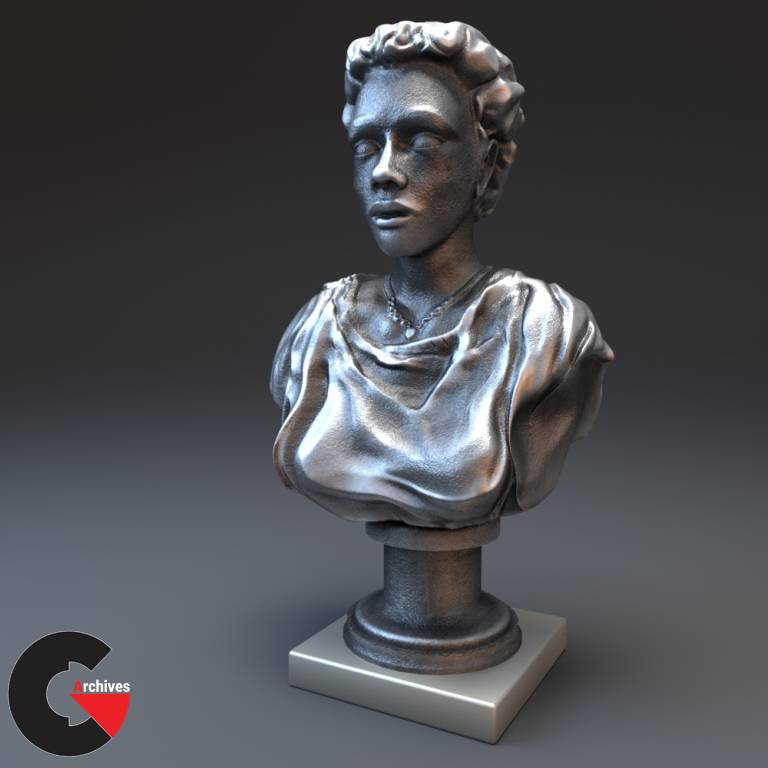

Developing realistic shaders in Arnold for Cinema 4d Vol. 01 : In this series of premium tutorials , in almost 8 hours , we learn how to develop advanced and realistic shaders in Arnold for Cinema 4d .
In this series of premium tutorials , in almost 8 hours , we learn how to develop advanced and realistic shaders in Arnold for Cinema 4d .
This is the first volume of a series of courses created at mographplus.com intended to introduce the tools and workflows for creating complex and realistic shaders , utilizing Solid angle’s Arnold renderer in Cinema 4d.
Our goal in this course is not only how to create realistic shaders but before that how to train your eyes to see real world surfaces and analyze their features, and then recreate those surfaces and shaders in Arnold.
In this first volume will be covering four major shader categories, Plastics, glasses, metals and fabrics.
For each category, first we try to familiarize you with the features of that shader type in real world and then show you how to recreate those features using Arnold shaders and nodes.
We start with plastic,In the first lesson of this course we learn how plastics tend to appear in real world and what features they have, after that we start using Arnold for Cinema 4d to recreate those features.
In the second lesson we try to recreate a highly-detailed Bowling ball shader and we really go all the way and make it as detailed and realistic as possible.
Next we create the shader for a vintage shiny dirty plastic phone
Then we start discussing glasses,In the first lesson of this section, after understanding physical features of glasses, we try to recreate different type of glasses in their bare minimum form.
In the second lesson we recreate a smudged glass shader, and it takes time but the result definitely worth the effort.
Then we take a look at creating an extreme example which is going to be a dirty rusty colored glass shader, and I promise you there is a lot to learn here.
The next category would be metals.
In the first lesson of this section, as we did with plastic and glass, first we figure out how metals work in real world and then we create different types of metals.
In the second lesson we create a detailed scratched vintage silver mug and I show you how to create every little detail in the reference photo.
Next we create the shader for a bronze cast sculpture and also a few other versions of the same shader to make it more interesting.
After that you learn how to create antique metal shade.rs
In the final lesson of the first volume, we explore fabrics and show you how to realistically create different types of fabrics in Arnold Renderer.
For the majority of the course , we’ll be taking a reference photo and use Arnold for Cinema 4d to recreate that shader , but to be as informative as possible and to not repeat ourselves we might change that rule sometimes .
Also this is a live course, and if there is a request for a specific shader in those 4 covered categories, I’ll be updating the course with more video so you can get the most out of this course.
In the second volume of this course which is planned to be released in the near future, we plan to cover, wood shaders, translucent shaders like chocolate, jade and marble, leather, plants shader and much more … stay tuned for that.
So there is a lot to learn in this course and if you are trying to take your Arnold knowledge to the next level and learn how to build complex shader networks in Arnold, you are in the right place.
Watch the Introduction Video:
lB6MwSwNNIYYHz66UqInBRH/video/3394
Direct download links 3 GB :
Direct download link reserved for subscribers only This VIP
Dear user to download files, please subscribe to the VIP member
- To activate your special membership site, just go to this link and register and activate your own membership . >>>register and activate<<<
- You can subscribe to this link and take advantage of the many benefits of membership.
- Direct downloads links
- No ads No waiting
- Download without any limitation ، all content in website
CGArchives Is The Best
Review
Review
Review this tutorial